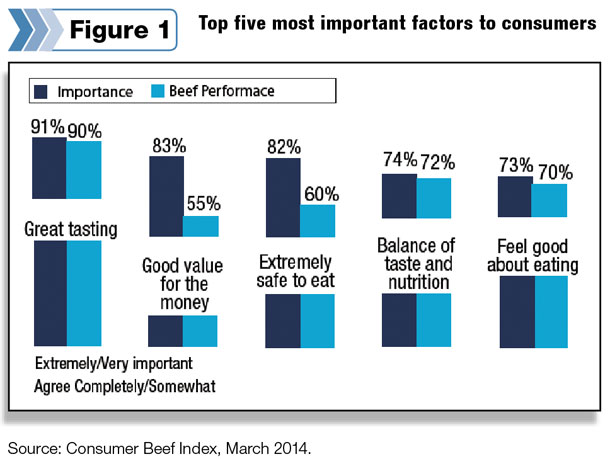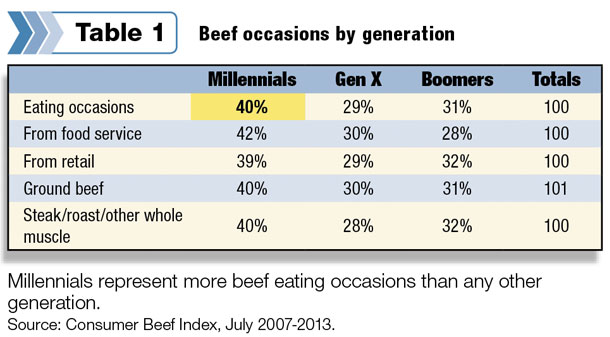Those are the types of trends that typically define today’s food consumers, says Lundeen, NCBA’s senior executive director of marketing research. Convenience is a key component for today’s buyers – and no segment means more than the millennial generation.
Millennial buyers – those born between 1980 and 2000 – are a sizeable demographic reaching over 80 million Americans. They are the generation today’s marketers want to capture since their numbers exceed both baby boomers (born 1945-1964) and generation X Americans (1965-1980).
But with the buying power of millennials also comes some unique challenges. Namely educating them on the convenience, taste, value and nutrition of beef.
The Beef Innovations Group (BIG) consists of volunteers, contractors, meat scientists, food scientists, product developers, chefs, marketers and researchers, all tasked with the technical and innovative side of beef promotion.

To deliver a product that is understood and appreciated by millennial shoppers, the BIG focuses heavily on taste – since studies show that is the primary critical factor for all consumers (Figure 1).
But convenience in cooking – especially for consumers just coming into their careers and life choices – is also a key component for the BIG and the Beef Checkoff, since it regularly develops methods, products and recipes.
Lundeen says the typical patterns of consumers begin to take shape around age 25.
“That’s when consumers start to discover craft beer, and they move from peanuts to cashews. Something happens at about that point. When the consumer makes decisions about life. What foods do I like? Which things carry forward?”

The beef education level among millennials tends to be low, Lundeen explains. Awareness of steak cuts and how to cook roasts needs to be taught. But overall, the millennial generation does like its beef, and it’s buying and eating it as much as older generations (Table 1).
How they eat it is where the changes are seen. Some trends worth noting that the BIG and checkoff teams are following up on would include:
Cooking methods
For the working millennial, many cooking methods will involve skillet or microwave options on weekdays, with more grilling options used on the weekend.
The BIG team focuses many of its products with an emphasis on packaging.
Steven Wald, executive director of innovation at the BIG, says several packing options create the convenience necessary for that 30-minute cooking limit, including a tri-tip roast cooked in the microwave in 25 minutes, and ground beef thawing steps, done within two minutes when packaged and prepped carefully.
Wald says the goal is to find a “game-changer” for the beef industry or “innovative ways to change delivery of the product for people who are time-starved and struggle to get food on the table.”
Portion sizes
Due to a mix of factors, including price, family size, nutrition and time, millennials are also downsizing some of their beef portions. Research shows 62 percent of all U.S. households have one to two people. So big steaks and roasts are typically less popular than smaller offerings.
Bridget Wasser, executive director for meat science and technology at the BIG, says a new eating experience is in demand among these customers. Those products might include smaller cuts of the ribeye, sirloin and country ribs, offering more affordable and plate-friendly portions.
Popularity of ground beef, retail
While beef has climbed higher in cost, Lundeen says the product has high loyalty among millennial buyers – and ground beef remains “a value offering that is maintaining its hold.”
This is especially true at the retail level, where half of the volume done with those businesses will be for ground beef.
Uses of mobile devices
The majority of all web searches are now done via smartphone, not with the desktop computer. That’s a key demographic switch reflecting technology use with the millennial consumer.
So the BIG and the Beef Checkoff continue to improve offerings of recipes, surveys and educational tips on cuts and cooking methods, sent to the digital device.
Devices also play a key in food purchases, both from grocery and food services. ![]()








